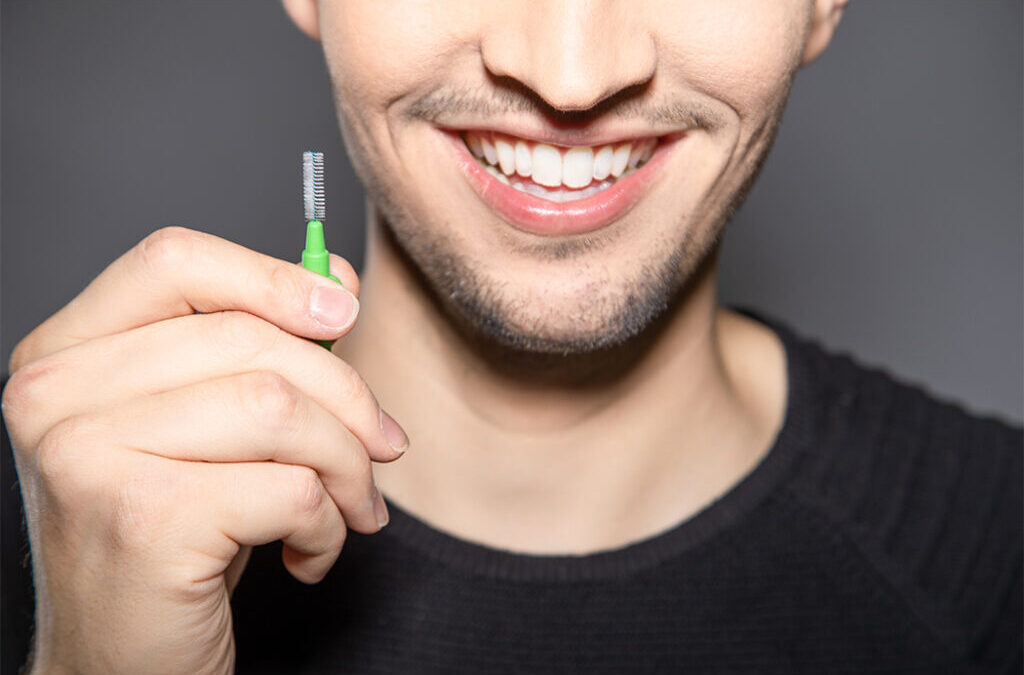Did you know that a toothbrush can only clean about 60% of the surface area between each tooth? Plaque accumulates between your teeth, which a toothbrush can’t reach. Use an interdental brush as part of your daily cleaning practice to avoid gum irritation, infections, and bad breath.
An interdental brush is more efficient at eliminating plaque than flossing. It is a little brush that cleans between your teeth, where a standard toothbrush can’t reach. It can help keep your gums and teeth strong and hygienic.
Nowadays, interdental brushing seems to be all the trend, but will it work?
To enlighten your mind, the interdental brush functions as:
It can be an alternative for flossing. According to some studies, using it regularly can contribute to a successful plaque removal than floss.
It can help reduce the risk of gum disease by removing food particles and plaque between both your teeth.
It is very useful in eliminating interproximal plaque, depending on size and form, as well as the edges of the teeth.
The small bristle heads on interdental brushes are meant to clean between your teeth, and they come in a variety of lengths to accommodate the gaps.
Interdental brushing should not be used in place of regular brushing. Brushing your teeth regularly is still essential. It should be done twice a day in soft, moderate circular strokes, front and back, till cleaned.
It’s advisable to resist a high-sugar diet as it reduces your saliva’s ability to defend your teeth. Remember, bacteria thrive when carbohydrates are abundant. So don’t allow them to have that kind of opportunity.
An interdental brush is beneficial for:
Individuals with mobility restrictions. It is simpler to manage than floss for patients with disabilities. Most especially when brushing the back teeth. It’s a fantastic choice for older folks who find flossing difficult. It can also be used to clean the areas between veneers, implants, bridges, and gums.
Those who dislike using floss. Flossing might turn anyone off because they find it very hard or dislike the feeling. Since interdental brushes are user-friendly, they could be a better alternative if you don’t feel comfortable using floss.
Patients who wear braces. Individuals with fixed braces may not be able to floss. But the tiny brushes may be used to clear away plaque in between the teeth and across the bracket edges.
People who have gaps between their teeth. It might be difficult to clean efficiently with the floss if you have huge gaps among your teeth. Also, if you have uneven tooth surfaces or receding gums, the floss may not cover the spaces completely. Brushes are more successful in eliminating plaques and food debris in these situations.
Some important things to consider while using an interdental brush:
To prevent any harm or discomfort, you must carefully select the size of your interdental brush.
It’s better to visit your dentist and have your interdental space measured. The dentist has that tool that allows them to precisely measure your interdental space and pair it with the appropriate interdental brush. You’ll be given recommendations for the brush’s specific size.
It’s a good reason to put your new interdental to the test while you’re still in the dentist’s office. So, you will know you’re doing it correctly and it won’t harm your gums or teeth. Before bringing your new interdentals home, feel free to ask questions and familiarize yourself with them.
When you are using an interdental for the very first time, you may feel brief bleeding. This signifies that a modest type of gum disease has so far begun near the interdental area like microscopic blood vessels. But, it’s a positive idea you detected it early. Because you may have had the same type of bleeding with traditional brushing a little later.
Don’t worry, after the biofilm is removed between both your teeth, the gum irritation will subside, the blood vessels will indeed be guarded, and bleeding will cease.
Don’t self-diagnose gum problems or try to calculate your own interdental space, and stock up on interdental brushes are all bad ideas. Interdentals must be chosen by a dentist who can effectively assess your teeth.
1. Interdental brushes come in a variety of sizes to suit the needs of most patients. Its sizes are available in a variety of sizes, allowing for efficient and personalized home treatment.
2. Tiny brushes can be utilized for smaller embrasures. Whereas, bigger brushes are useful to treat any gum problems. The small bristle heads on interdental brushes are meant to clean between your teeth. They come in a variety of lengths to accommodate the gaps.
3. Are much more effective and less abrasive than floss, as shown in a recent meta-analysis.
4. It can clean between your teeth and eliminate biofilm formations. After using it, you can just rinse the brush and re-use it again.
5. An interdental brush can be used with one hand, and variants with a wider handle can help prevent hands from entering the mouth.
6. It is considered to be simpler to use than floss.
7. Folks with less manual dexterity or bigger hands may find it more attractive than floss.
8. Bacteria thrive when carbohydrates are abundant. So, it’s advisable to resist a high-carb, high-sugar diet as it reduces your saliva’s ability to defend your teeth.
9. If you already have diabetes or other immune system problems, pay special attention to your oral care and interdental area.
10. Dentists can assist patients in determining which brushes are ideal for proximal cleaning.
You can keep your teeth, gums, and mouth healthy by seeing your dentist regularly. An oral health professional can always provide an immediate solution to your gum problems. They also provide a source of encouragement for a patient who is struggling to stay motivated. This is why they often recommend interdental brushes. These are excellent alternatives to flossing that can enhance a patient’s dental health at its best!

